All week we have been taking part in the UK’s 2023 #InvasiveSpeciesWeek, raising awareness of the threat of grey squirrels to Scotland’s native reds.Read below for a summary of all of our thoughts this week, detailing what invasive non-native species are, why they are a problem, what SSRS is doing, and how you can help.
What are Invasive Non-Native Species?
Over 2,000 species have been introduced to the UK from all over the world by people. Around 10-15% of these are invasive non-native species – recognised internationally as 1 of the top 5 drivers of global biodiversity loss. They threaten the survival of native wildlife, damage our natural ecosystems, and cost 🏴 around £200 million annually. Red squirrels in Scotland are under threat from the spread of an invasive non-native species, the grey squirrel. Grey squirrels were first introduced to the UK from North America in the late 1800s and outcompete reds for food and habitat. Greys also carry squirrelpox, a virus that doesn’t harm them but is deadly to reds.
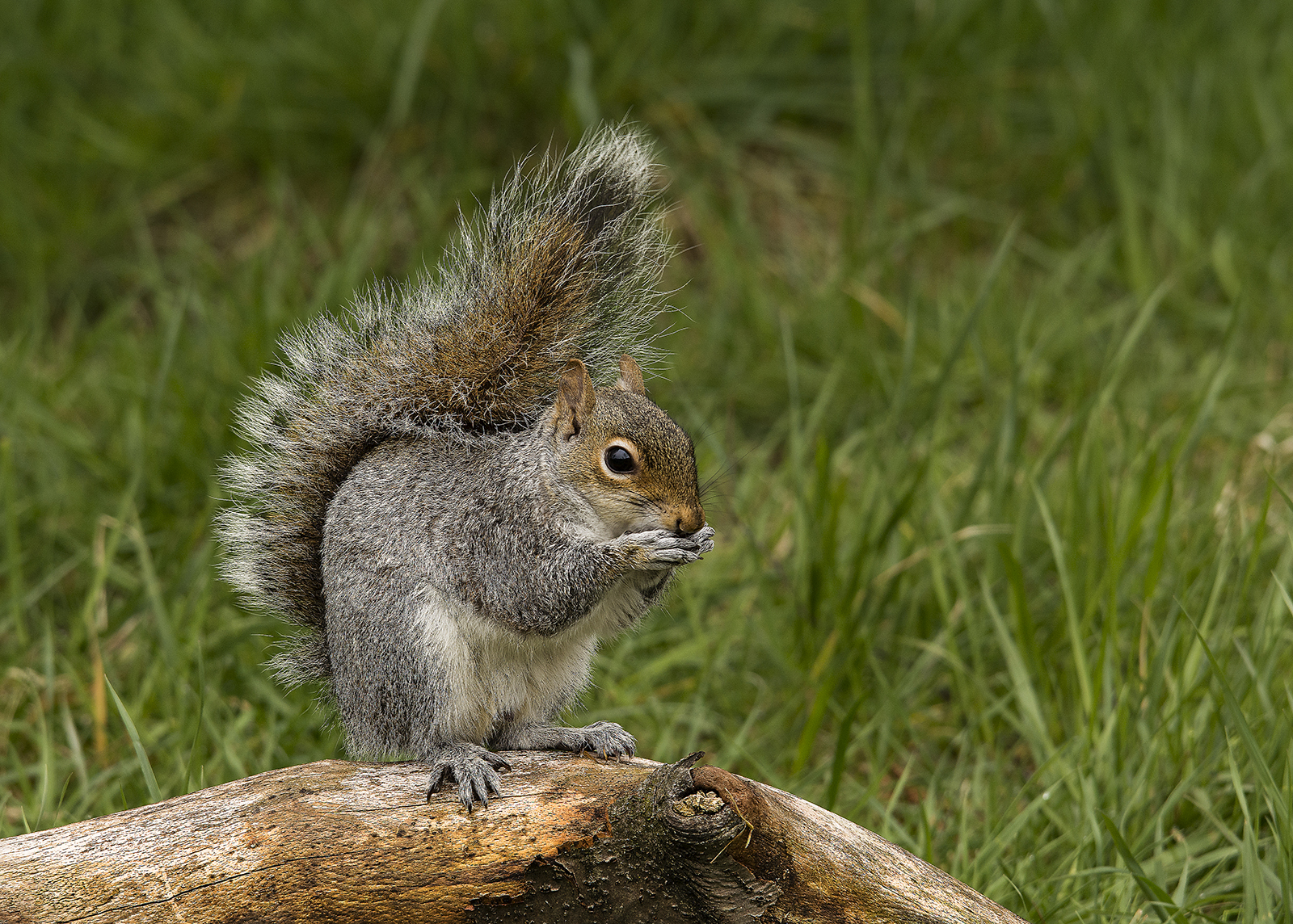
Why do Invasive Non-Natives spread?
Invasive non-native species spread around the globe in a variety of ways, primarily by human activities. Grey squirrels were introduced to the UK initially by the Victorians mostly as a desirable ornamental garden feature in the late 19th century. In Scotland there were three early releases – Argyll (1892), Fife (1919) and Edinburgh (date unknown, first sightings 1913). The grey population in Aberdeen is far more recent, escaping from a zoo enclosure in 1971.
Greys adapted quickly to the UK’s countryside and were able to spread prolifically. Often thought of as ‘broadleaf specialists’ they outcompete reds for food and nesting sites mainly due to their ability to live at density levels eight or more times than reds, along with their capacity to ingest acorns earlier in the season meaning red squirrels miss out. It is estimated that on average when greys move into a red squirrel territory, left unchecked, they can overthrow the native red population within 15 years. The replacement rate speeds up if squirrelpox is present.
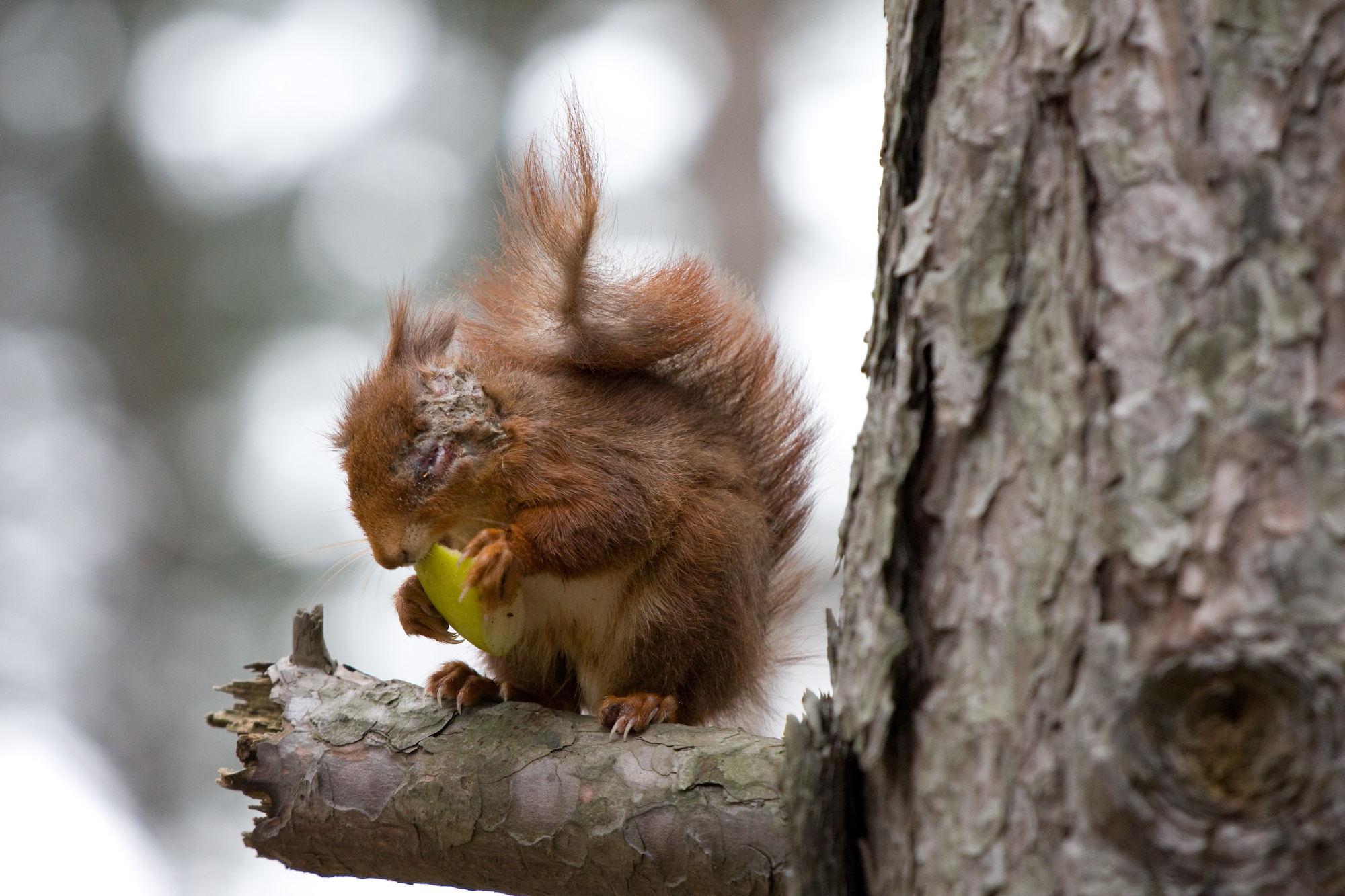
Why are Invasive Non-Native Species a problem?
INNS are recognised as one of the top five drivers of global biodiversity loss. Tackling invasive species is included in the Scottish Government’s new draft Biodiversity Strategy to 2045 due to the damage they do to our ecosystems and native wildlife. This is done via a variety of ways including predation, hybridisation, introduction of diseases, and competition for resources.
Grey squirrels threaten our native reds through disease and competition. The effect has been such that since their introduction they have sadly replaced reds in most of England and Wales, and much of Scotland’s Central Belt.
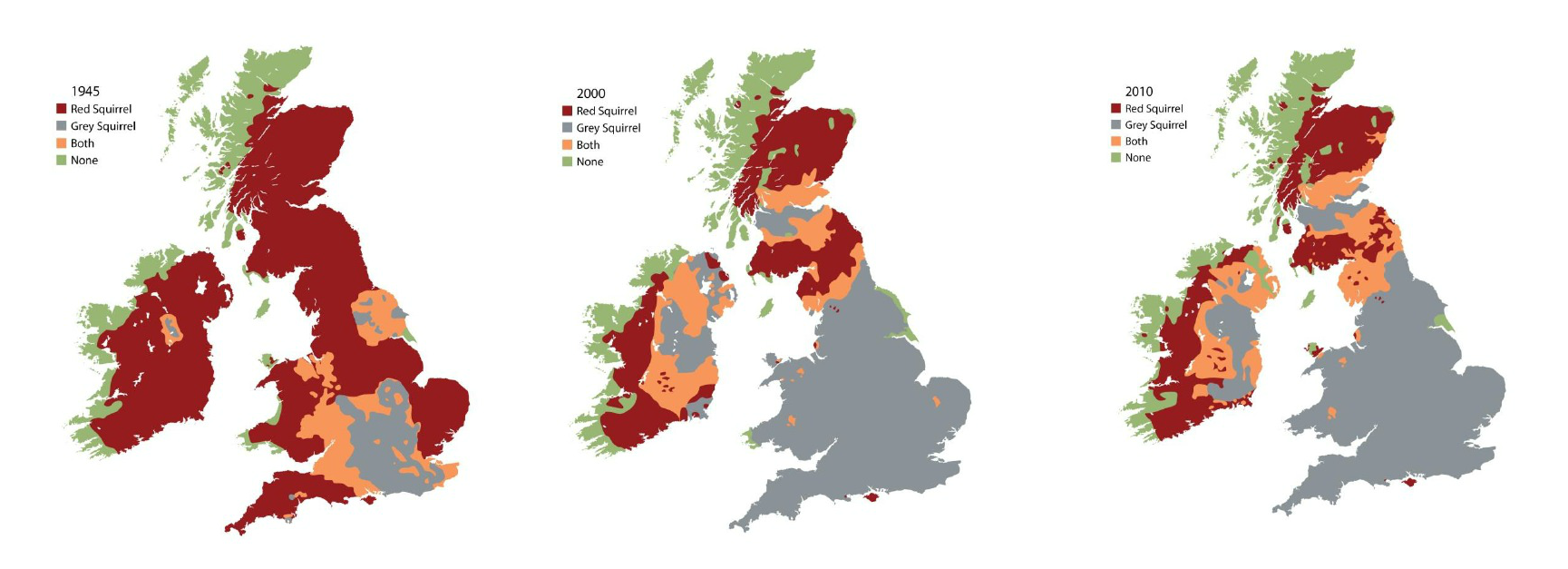
Aside from saving one of the nation’s most loved mammals, there are other reasons to control grey squirrels. Because greys live higher densities than native reds, their effect via bark stripping in our native broadleaf woodlands is incredibly damaging. In England, which has higher amounts of broadleaves, tree damage costs the forestry sector an estimated £31 million annually.
The Scottish Government, through its statutory forestry agencies, and in partnership with environmental NGOs, is actively engaged in landscape-wide native woodland restoration programs that will likely increase our national share of broadleaves. Initiatives such as Riverwoods – reconnecting the riparian habitat along our waterways, and the Alliance for Scotland’s Rainforest – revitalising the rare and important temperate rainforest ecosystem of the West Coast, could be put at risk by an unchecked grey squirrel population in Scotland.
What is being done to prevent Invasive Non-Native Species?
SSRS works in partnership with stakeholders, landowners, and volunteers to deliver the National Scottish Strategy for Red Squirrel Conservation, undertaking control of invasive non-native grey squirrels to ensure red squirrels continue to be a part of Scotland’s special native wildlife.
We work in specific priority areas where we know that red squirrel populations will benefit from our actions. You can see these detailed in the map below.
In the North-East (the yellow circled area) we have reduced the island population of grey squirrels significantly and aim to achieve eradication. The success of the work carried out so far has resulted in a steady increase in reds across Aberdeen, from major city parks to back gardens.
In the Central Lowlands we defend the red only population of the Highlands and Aberdeenshire by carrying out grey squirrel control along the Highland Boundary Fault Line (the yellow diagonal line). We also undertake squirrelpox testing to detect any spread of the disease from the south of Scotland.
In South Scotland volunteer red squirrel groups work across Priority Areas of Red Squirrel Conservation (in green on the map). Many of these groups were set up in our Developing Community Action phase and are now independent, successfully protecting reds and limiting the outbreaks of squirrelpox, which exists in the region.
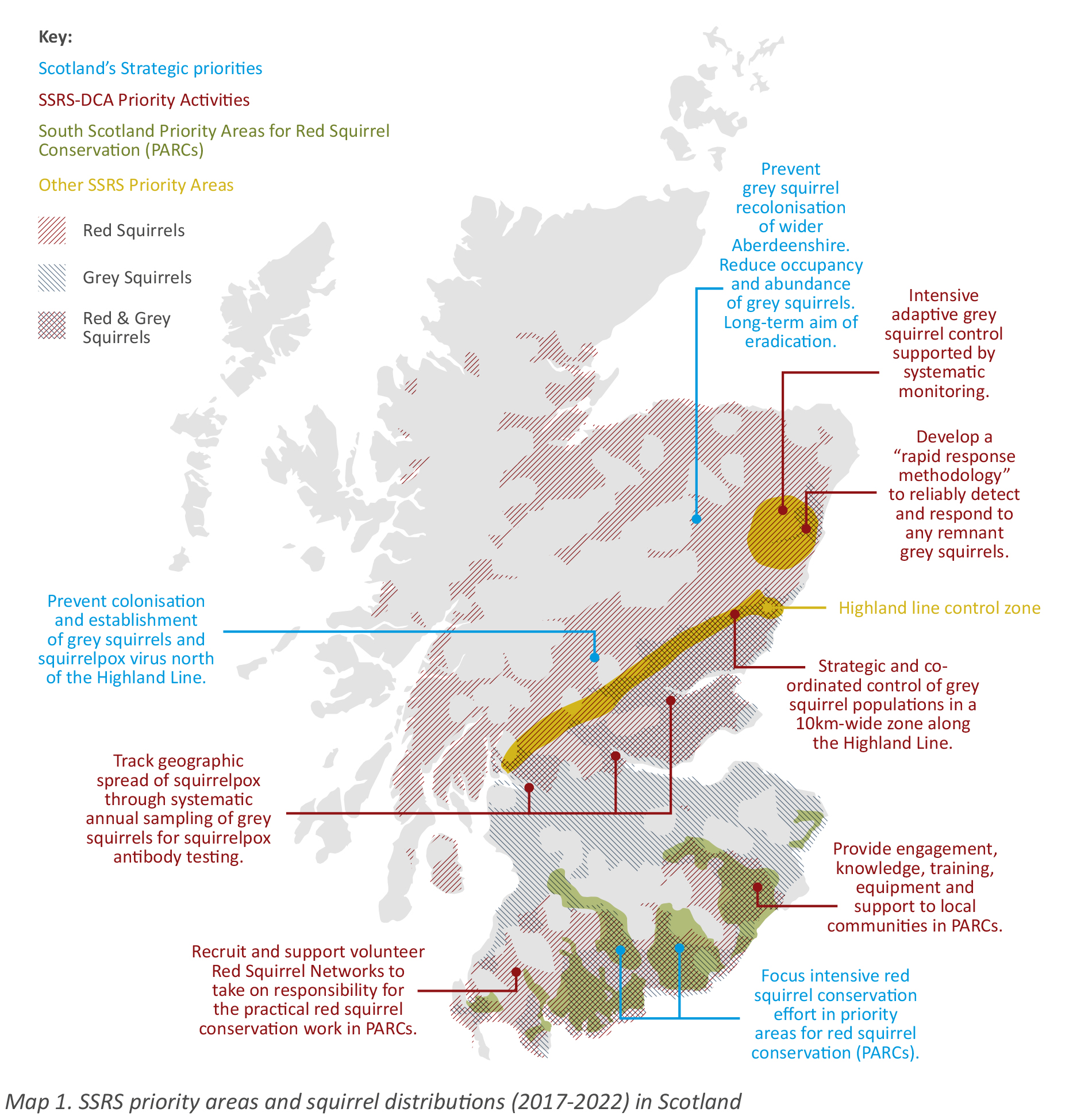
What can you do about INNS?
There are many things you can do to help our work, and red squirrels in your area:
🔭 Record sightings of grey and red squirrels on our website: https://bit.ly/3pVpyEk
🥜 Help red squirrels with supplementary feeding: https://bit.ly/42LxK8E
🧼 Clean feeders in areas with greys and reds: https://bit.ly/42LxK8E
📦 Send any red squirrel carcasses found for post-mortem: https://bit.ly/437TIT2
💰 Donate to SSRS to help fund project work: https://bit.ly/3ME40Vs
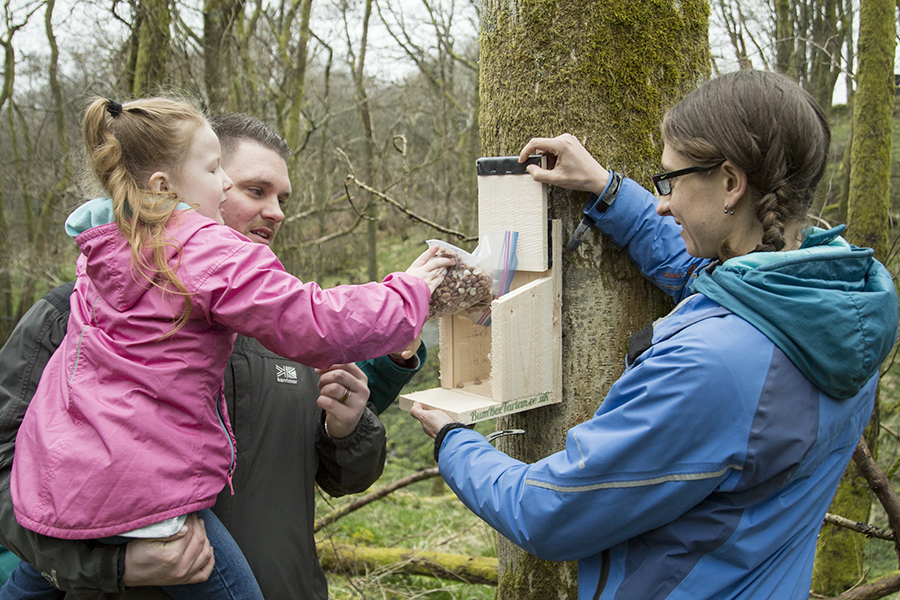
Get INNSvolved!
🐿 If you are interested in assisting in INNS control work, there are lots of ways to get involved! 🐿
Join a volunteer Red Squirrel Group:
There are 18 of these in South Scotland and 1 in Fife. They are always looking for volunteers to join and help with a variety of roles, including grey squirrel monitoring and control. Get in touch with your local group here: https://bit.ly/3OoRt9S
We are currently specifically advertising for volunteer grey squirrel dispatchers for the Annandale, Castle Douglas and Solway Forest Red Squirrel Groups. We are looking for people who are local to these areas, enthusiastic about protecting red squirrels, with training or experience in humane animal dispatch. You can find out more and apply here: https://bit.ly/3MBi4z4
Become a dispatcher in the Argyll, Trossachs or Stirlingshire:
We are currently looking for volunteer Grey Squirrel Dispatchers in this area, where we are working to prevent invasive non-native grey squirrels from replacing native reds north of the Highland Line. The work is essential to helping us achieve our goals, providing a much-needed dispatcher service for volunteers on our trap loan scheme.
We are looking for people who are living locally, enthusiastic about protecting red squirrels, with training or experience in humane animal dispatch. You can find out more and apply here: https://bit.ly/3MBi4z4
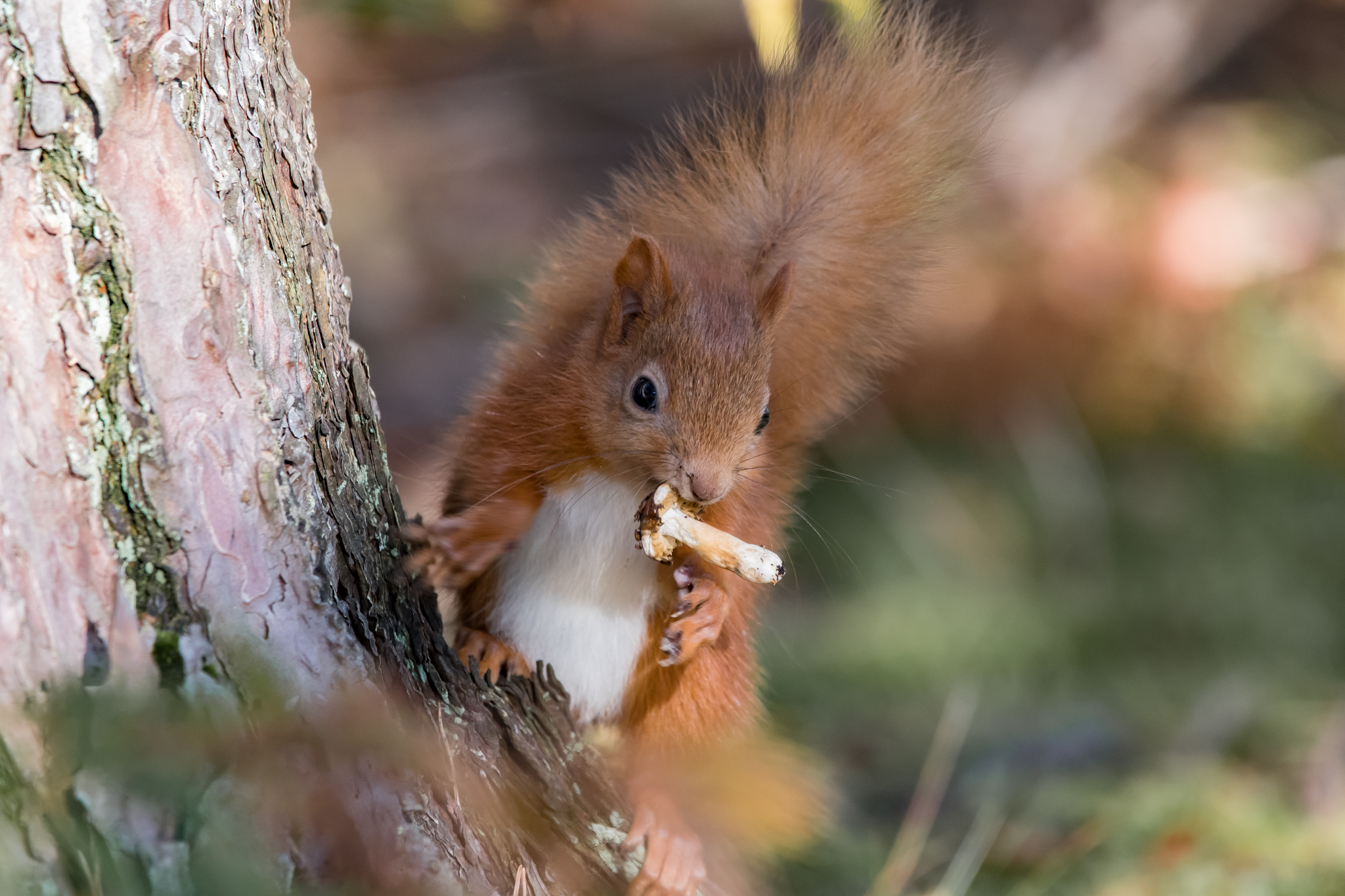
Thank you to everybody who helped us celebrate INNSweek 2023! We hope this information helps to explain why the work we do is so vital for saving red squirrels in Scotland, and why a sustainable landscape approach continues to be needed for long-term future. You can find out more about the project on our website, or by emailing us on squirrels@scottishwildlifetrust.org.uk .
